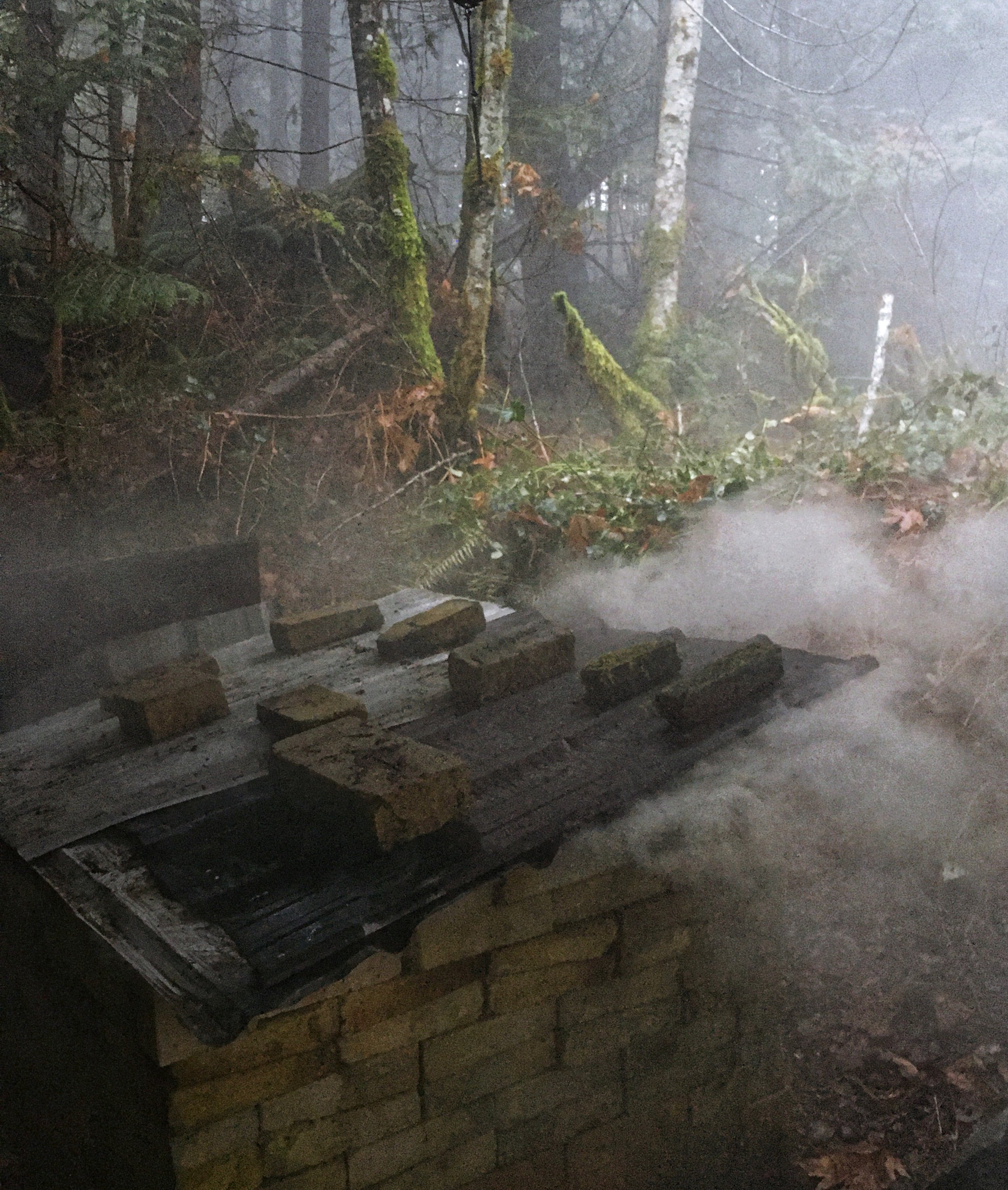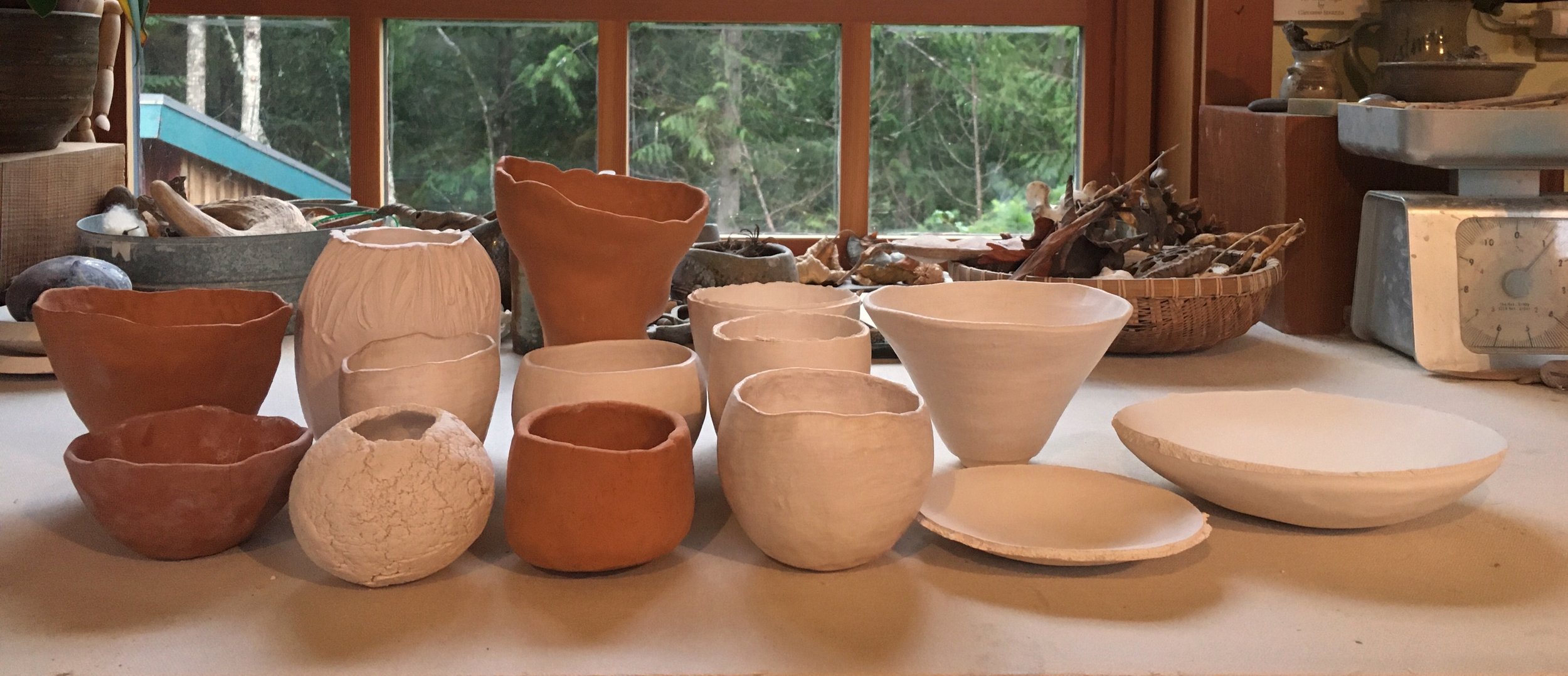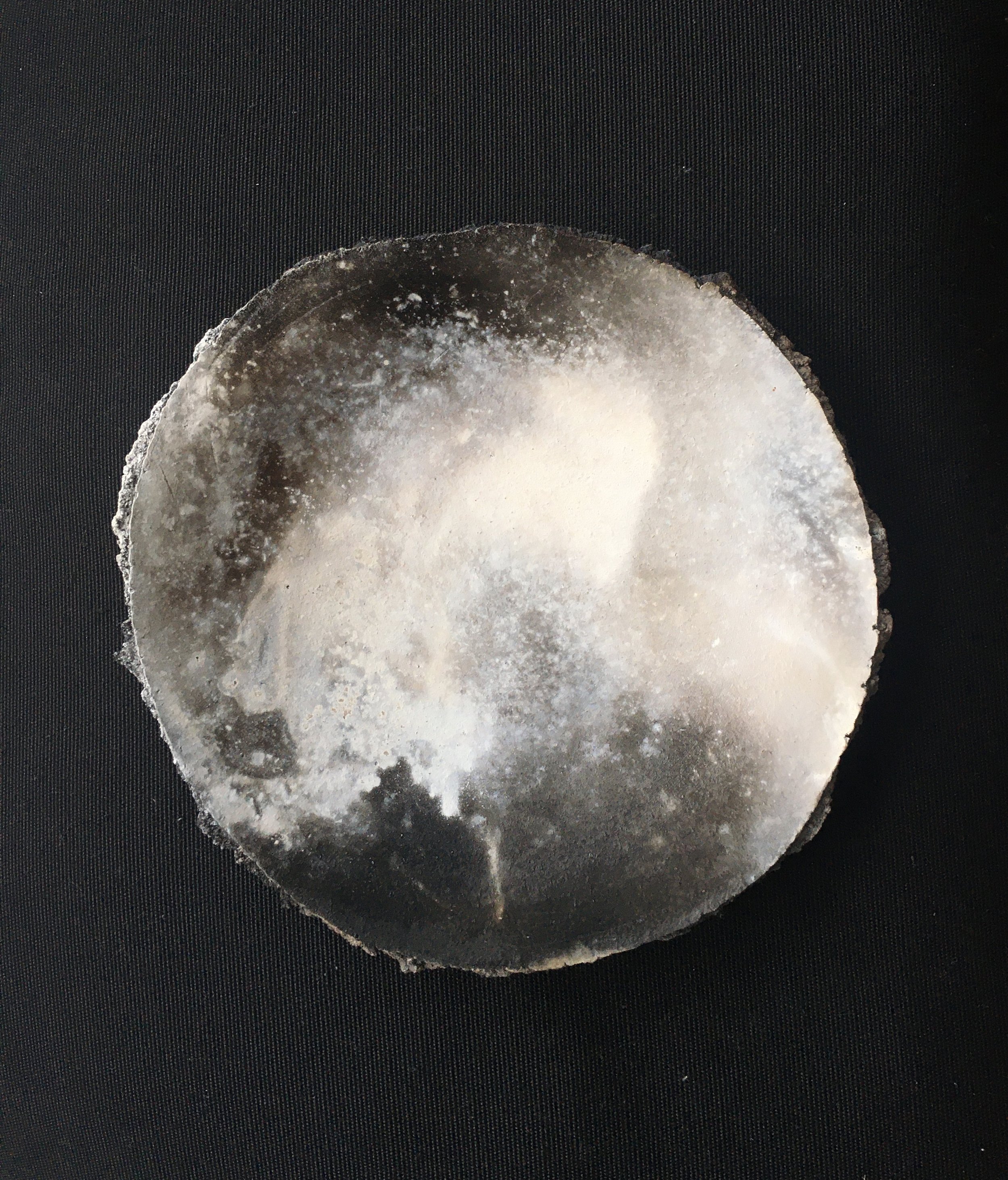Pit Fire
This is the selection of pots I will surrender to the pit fire. Up until this point in the process I am in conversation with clay in the design of the form. The type of clay will often influence the shape. In this firing I have vessels made from foraged glacial clay from Northern British Columbia and different types of high fire clay. All are hand shaped, some are burnished, none are glazed and all are bisque fired.
We lay the bed with cardboard and a thick layer of hardwood sawdust. Even though I had cedar shavings from PlumbBob, the local woodcarver, who made my tools, I learned that oils from cedar will create oil marks on the pots and that is not the design aesthetic I am looking for.
We placed the vessels in the pit and sprinkled a bit of sawdust inside the pots. Some of them had a loose blanket of newspaper wrapped around them and some had banana, avocado and lime peels nestled in close for effect. More sawdust, another layer of pots and then more sawdust with a bit of shredded paper added to the mix.
Next, we roll up newspaper into candles and dig them into the layered sawdust. This is what ignites the sawdust.
It is now time to let everything go, to let the reigns off, and allow a different level of expertise to take over. The work is now being transferred to those we have invoked to come and be with us on the journey and they will do it according to their own style.
We purify the pit with sweetgrass, say a prayer and lite the paper candles.
Within a few minutes she is smoking beautifully and we take the corrugated tin roofing sheets and cover the pit so that there is just a little air getting in through a few places in the bricks.
We want it to simmer nice and slow so the pots don’t crack with the heat of the flames.
Once we see it simmering nicely we can let it sit overnight. Waiting till morning seems long….
while we wait, sawdust is slowly burning down and as it is burning it is releasing carbon (so long as there is no flame or oxidation). Carbon enters into clay body and produces a gorgeous carbon rich black colour.
Next day: it’s exciting to take the corrugated metal top off and see what lay in the ashes. Slowly we retrieve one pot at a time, dusting off ash to see the particular markings of each piece.
The pieces are rinsed and polished with wax to seal, coat and protect the surface.
The carbon colouring will fade if left in direct sunlight or heated to high temperatures.
The treasures sing, bring joy and add beauty in the language of images.





